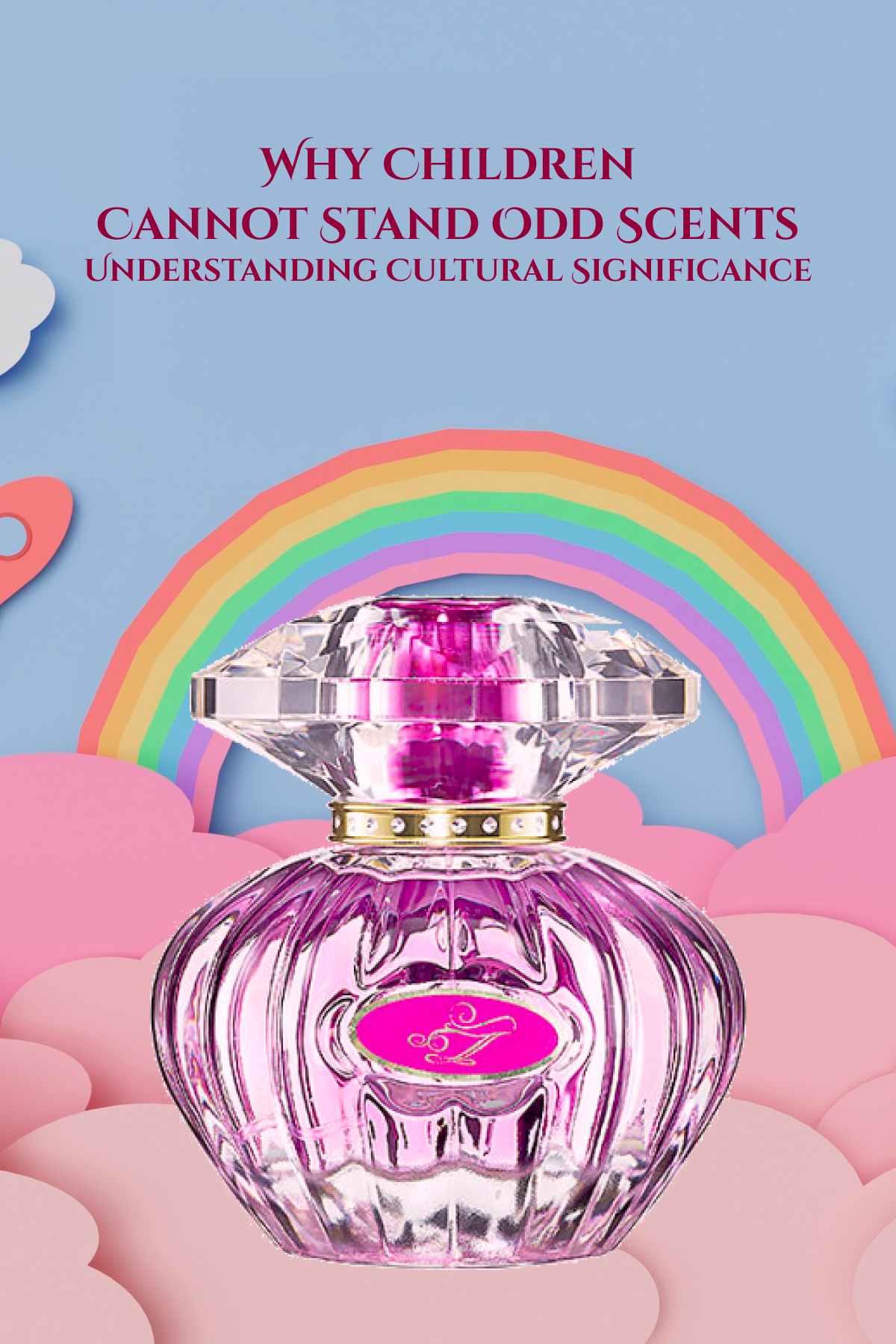Oud, often known as “liquid gold,” is one of the world’s most revered and sought-after perfumes, especially in the Middle East. Its deep, woody, and somewhat sweet aroma has been treasured for ages, and it has a particular place in the hearts of many fragrance lovers.
Despite their popularity among adults, children frequently dislike oud fragrances. This phenomena presents important questions, like why children struggle with oud. What makes it so undesirable for them?
And what does this say about the evolution of olfactory preferences?
In this blog article, we’ll look at the biological, psychological, and cultural aspects that contribute to children’s aversion to unpleasant fragrances.
Oud, also known as agarwood, is a resinous wood formed when the Aquilaria tree becomes infected with a certain mold. It has a unique fragrance. For generations, perfumes, incense, and traditional medicine have been made with the black, aromatic resin produced by this process. The aroma of oud is diverse and multifaceted, with descriptions ranging from deep, woody, smokey, and slightly sweet to spicy. It has a strong and pungent perfume that can elicit a variety of feelings and reactions.
For adults, particularly those in the Middle East and other regions where oud has significant cultural roots, the aroma of oud may be pleasant, rich, and even spiritual. Children, on the other hand, frequently have a very different experience.
Biological Factors: The Developing Olfactory System.
One of the key reasons children may struggle to tolerate unpleasant scents is biological. The olfactory system, which controls our sense of smell, is still developing in children. As a result, their capacity to receive and perceive complex scents such as oud or fragrantica chypre is less developed than that of adults.
Children are more sensitive to strong odors, making pungent fragrances like oud overpowering. The rich and strong quality of oud might be overwhelming for their still-developing nostrils, causing discomfort or even nausea.
Preference for Simpler Scents: In childhood, people tend to favor simpler, more plain scents. Children frequently prefer sweet, fruity, or gentle floral aromas since they are easier to identify and comprehend. Oud, with its numerous layers and depth, may be difficult for young noses to perceive.
Psychological Factors: Associations and Experiences
Psychological variables influence children’s preferences and aversions to specific odors. Smell is tightly related to memory and emotion, and children’s perceptions and reactions to fragrances can be altered by their experiences and memories.
Unfamiliarity: For many youngsters, oud is an unusual smell. Unlike more prevalent aromas like vanilla, citrus, or lavender, which individuals may come across on a frequent basis, oud is not part of their daily olfactory landscape. This unfamiliarity can elicit a negative reaction since youngsters are often cautious of new or unusual experiences.
Cultural Differences: In areas where oud is not a cultural norm, children may be less exposed to the aroma and hence less likely to form pleasant associations with it. Children raised in countries where oud is common, on the other hand, may be more used to the aroma, though they may still find it overwhelming for the reasons stated above.
Associative Learning: Children learn to connect odors to memories and emotions. If a youngster has had an unpleasant encounter with a powerful fragrance, they may acquire an aversion to comparable scents, such as oud. Positive experiences, on the other hand, can result in a preference for specific odors.
Cultural and social influences: Oud’s Role in Tradition
Oud is more than just a smell in many cultures, notably those of the Middle East; it represents tradition, status, and spirituality. Oud is commonly utilized in religious ceremonies, family gatherings, and special occasions, making it a perfume that is firmly embedded in the cultural fabric of these communities.
Cultural Expectations: In cultures where oud is highly regarded, children may be expected to develop an appreciation for the aroma as they get older. However, this respect usually grows over time as the person matures and obtains a better grasp of the cultural significance of oud.
Introduction to Oud: Some families introduce their children to oud at a young age, usually in diluted form or blended with other, more familiar aromas. This progressive exposure can help infants acclimate to the scent over time, even if their early reactions are averse.
How Olfactory Preferences Change Over Time
As youngsters grow and their olfactory systems mature, their fragrance preferences frequently change. What was overwhelming or terrible as a youngster may become manageable, if not joyful, as an adult. This shift can be attributable to numerous factors:
Maturation of the Olfactory System: As the olfactory system develops, people become better suited to process and appreciate complex aromas such as oud. The powerful and multifaceted quality of oud may grow more enticing as the individual develops the capacity to recognize its numerous layers and nuances.
Cultural Integration: Children reared in cultures where oud is commonly used may develop a larger appreciation for the aroma over time, especially as they associate it with positive experiences like family gatherings, religious rites, or personal accomplishments. Similarly, those exposed to the best chypre fragrances from an early age might cultivate a deeper connection with the scent, linking it to fond memories and significant moments in their lives.
Exposure and acclimatization: Prolonged exposure to oud, particularly in favorable or meaningful situations, might result in a progressive acclimatization to the scent. What was once overwhelming can now become a beloved and familiar aroma.
Conclusion: Understanding Aversion and Embracing the Journey
Children’s aversion to odors is an intriguing combination of biology, psychology, and culture. While their initial reactions to oud may be unpleasant, it is critical to understand that these preferences are not fixed. As children grow and their sensory systems mature, they may develop an appreciation for complex smells such as oud, especially if they are exposed to them in good and culturally relevant circumstances.
For parents and caregivers, it is critical to gently and supportively introduce youngsters to a variety of fragrances, allowing them to explore and develop their olfactory preferences at their own speed. Understanding and appreciating children’s sensitivities to scents, especially oud, can help them develop a positive relationship with scent that will last throughout their lives.
Finally, the experience of discovering and appreciating perfumes is deeply personal and culturally influenced, beginning in childhood and continuing throughout maturity.













